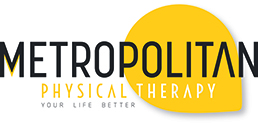The neck is a curious thing, and one of my favorite parts of the body to treat as a physical therapist. There is so much to know and understand to be capable with management of the cervical spine that it uses all of my skill sets.
I stopped instructing my patients with vigorous neck stretches at least 10 years ago, and my patients get better quicker as a result. When I have a patient that has failed previous physical therapy for neck pain, I find that there is usually a bias towards muscle stretching and I have them stop vigorous stretching.
Interestingly, I have had four patient in the last 12 months who gave themselves severe nerve injuries, including one who strained his spinal accessory nerve in the upper cervical spine giving himself severe muscle weakness of his upper traps, and another patient who was stretching by hanging from her arms over his head at the gym, giving himself severe loss of strength in his rotator cuff..
Getting ROM is important, and I encourage all my patients to move the neck within a comfortable range of motion. But I do not understanding the benefit of vigorous neck stretching for acute, and to a certain extent, chronic neck pain. Yes, the muscles hurt, and perhaps they are tight, but you’re not going to stretch your way out of the problem. (This is also the case with failed dry needling physical therapy).
For many cases, it is equivalent to trying to stretch out an acute ankle sprain. On face value, most people get that this is not a good idea.
In some case, such as an irritated nerve root, vigorous stretching will actually cause increased pain and symptoms and delay healing.
I examined a women yesterday who has had years of pain, countless yoga classes, and physical therapy with a stretching bias. She gets short term relief, but the minutes she sits at her desk, the muscle tighten up, and she hurts again. Which leads her to do…..more stretching!
Although the muscles can hurt, they are the symptoms and generally not the cause (with a few exceptions). A great way of explaining this is to think about a light bulb. Let’s say that you have a lamp in your house that keeps blowing out the bulb. And you keep replacing the bulb, only to have it blow out again. Do you keep replacing the bulb, or do you fix the circuit that is causing an overload on the lamp? The key to successful physical therapy is to find the “switch” that’s causing the muscles to hurt and find a way to turn it off, or at least fix the “circuit” so the “lamp” does not keep blowing out.
It a very complicated area of the body and many different problems with the “circuit” can cause similar pain. Not only can you have orthopedic causes for pain, but you can have irritated peripheral nerve roots, vestibular disorders, sensorimotor processing problems, and post-concussion/TBI problem that can manifest itself in neck pain.
The primary reasons why muscle hurt is that they become ischemic (lack of oxygen) from being constantly “turned on” and the resulting change in the muscle chemistry causes chemical pain receptors located in the muscles to depolarize. The muscles are being signaled by an irritated joint, ligament, nerve root, poor coordination from the central nervous system, or just trying to hold up your head’ on a cervical spine while you’re working on your computer. The muscles are basically working harder than they need to be.
Any type of treatment to the muscles are going to help your pain, as the result of improving circulation to the muscles and causing a change in the muscle chemistry. This is true for any type of massage therapy, stretching, yoga, and even dry needling. But this will likely only be short lived giving you only temporary relief.
Neck stretching tends have more validity after the primary joint related and pain problems have been addressed, and necessary when ROM is limited to perform needed activities. With that being said, there are no health and wellness reasons why you need more range of motion and flexibility than you need to perform your normal activities.
Successful physical therapy can examined and address these problems with science based treatments so you can have a good long term solutions, as opposed to short term reduction in pain. And considering my clinic is in the top 7% internationally for physical therapy outcomes, we can back up our claims with the data to show our excellent outcomes.

